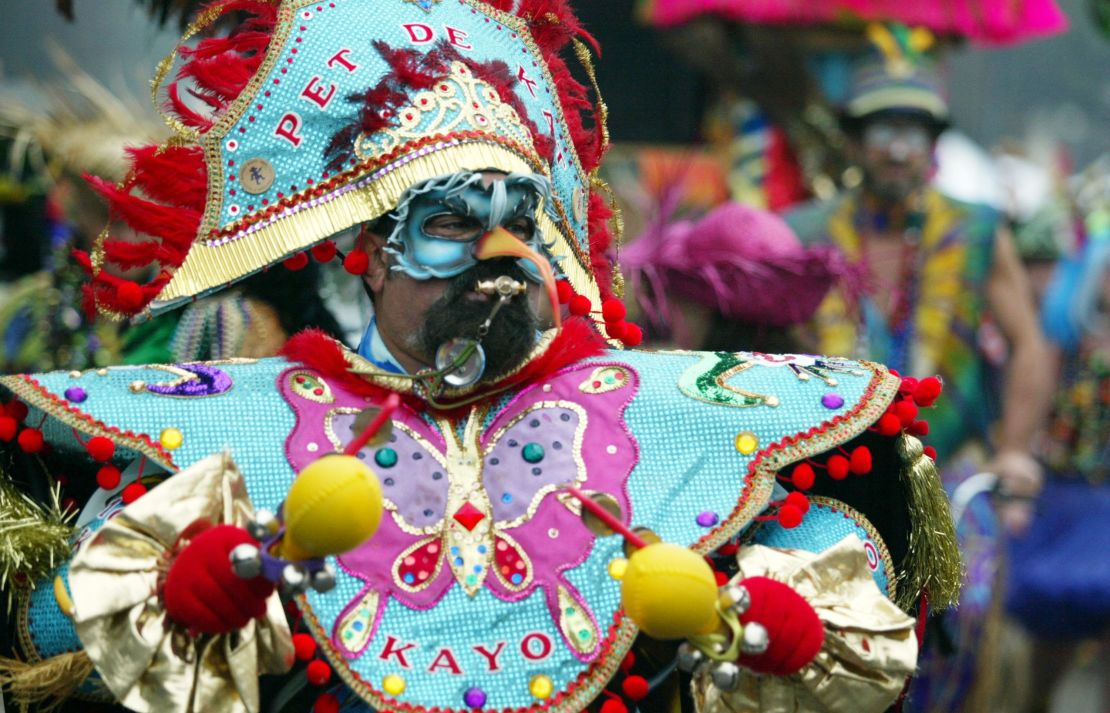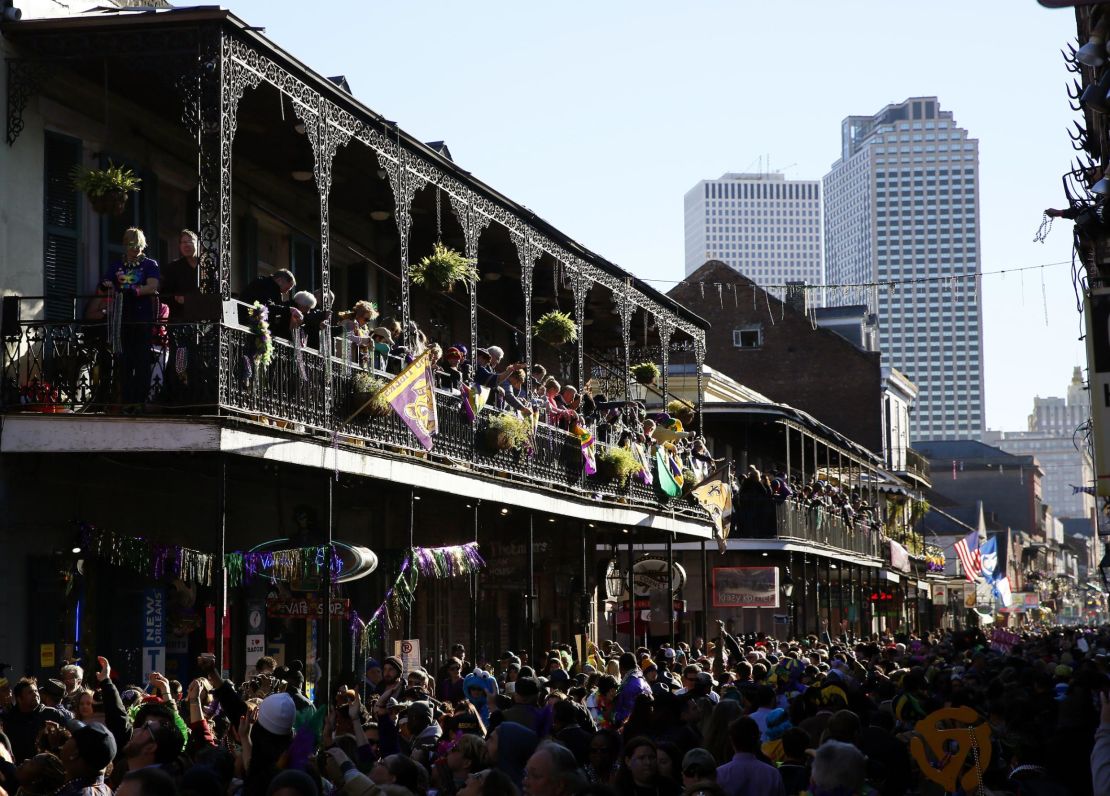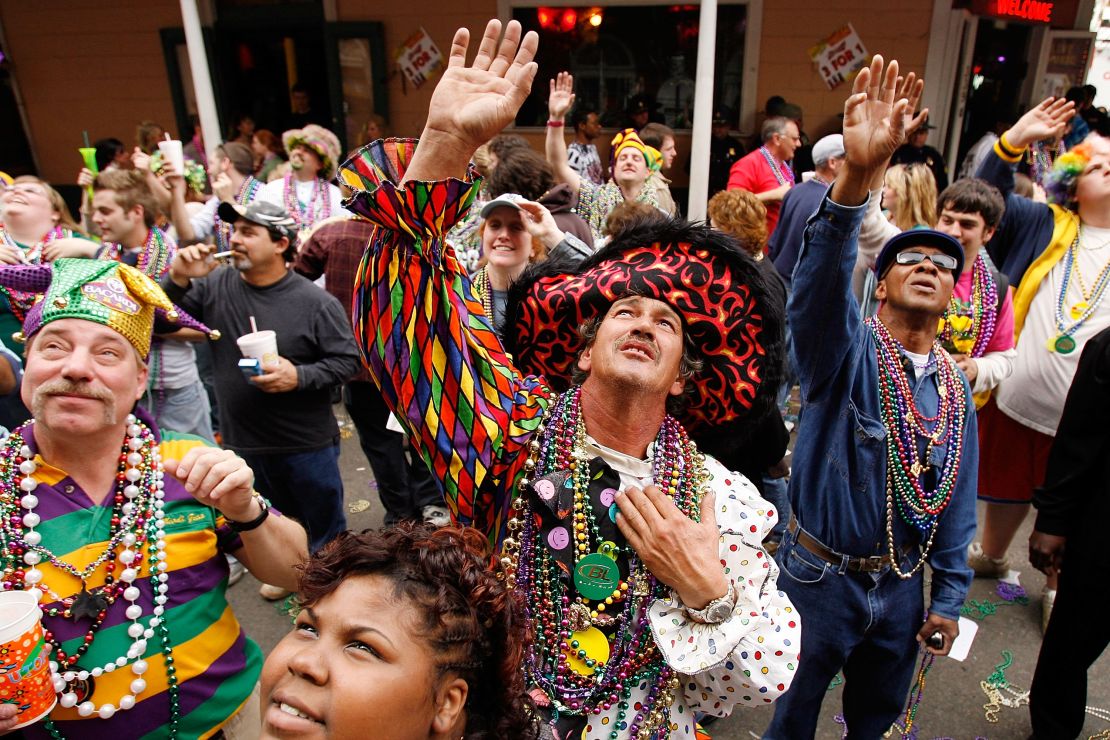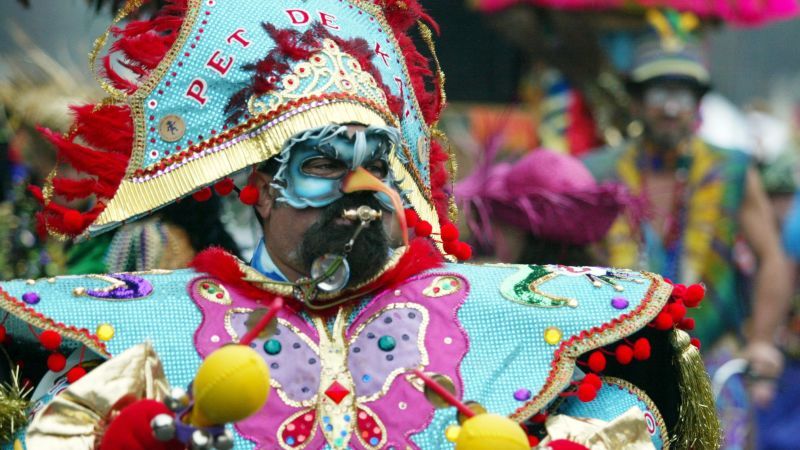cnn
—
It's time to open the accounts and eat the last bites of king cake: it's time for Mardi Gras.
Mardi Gras in French means Fat Tuesday. It is also called Shrove Tuesday, Shrove Tuesday or Pancake Tuesday, depending on where the celebration takes place.
No matter the name, it is a day of revelry that includes parades, parties and gastronomic indulgences before the Christian fasting season of Lent begins on Ash Wednesday (February 14, 2024). It marks the last day of the Carnival season, basically a six-week period of partying around the world.
Mardi Gras is synonymous with Carnival celebrations in New Orleans, Venice and Rio, but the day is celebrated in equally festive ways around the world in countries with large Roman Catholic populations.
However, what began as a holiday rooted in religious tradition has become a cultural phenomenon, leading to parties for fun, and not necessarily in anticipation of 40 days of penance between Ash Wednesday and Easter Sunday.
Whatever your motivation, here's everything you need to know about Mardi Gras to learn the history of the holiday.
According to historians, Mardi Gras-like festivities date back thousands of years to ancient Roman festivals celebrating the harvest season. After the arrival of Christianity in Rome, old traditions were incorporated into the new faith and debauchery became the prelude to Lent.
This fusion resulted in a hedonistic period of drunkenness, costumes and dancing with a strong dose of religion.
As Christianity spread throughout Europe, so did the pre-Lent festivities. Along the way, new traditions were born and some old ones took on new incarnations. One such Roman tradition became the staple sweet of the New Orleans Mardi Gras, known as king cake.
During Saturnalia, a celebration of the winter solstice of Saturn, the god of agriculture, beans were baked into pies to celebrate the harvest. Whoever found the bean was named “king of the day.” In the Middle Ages, Christianity appropriated the tradition of the Epiphany festival, also known as Three Kings Day.
Also known as Twelfth Night, Three Kings Day marks the start of the Carnival season each year on January 6. It commemorates the visit of the three wise men (or wise men) to the Baby Jesus on the twelfth night after his birth. for a celebration, gifts and banquets.
Christians in Spain, Latin America, and the United States celebrate the occasion with parades, gifts, and family parties. Thousands of people gather each year in Mexico City to taste a mile-long “Rosca de Reyes,” a staple of the holiday. Elsewhere, families prepare the crown-shaped dessert at home.
The cake has a trinket or baby figure baked inside to symbolize Christ and is eaten during Carnival festivities. As in Roman times, the person who finds the trinket is crowned king or queen of Carnival, a distinction that entails various functions depending on the culture, from preparing tamales for the next family party to riding on a parade float.

Along the way, Shrove Tuesday emerged as the last day of Carnival, the week before the start of Lent. The word Shrovetide is the English equivalent of Carnival, which comes from the Latin words carnem levare, meaning “to remove the flesh.” “To confess” means to hear confessions, according to Catholic theologian Father William P. Saunders.
“While this was seen as the last opportunity for joy and, unfortunately in some places, has resulted in excessive pleasure, Carnival was a time to cast away the things of the flesh and prepare spiritually for Lent,” he wrote in CatholicCulture. .org. .
To prepare for Lent, Christians prepared pancakes to use up their reserves of eggs, milk, butter and fat, giving rise to Pancake Day in England. As the tradition spread across Europe, it became Mardi Gras in France, where waffles and crepes are prepared as part of a lavish feast.

European settlers and slave traders brought the pre-Lent festivities to America, where they became major celebrations during the Carnival season. Celebrations in Trinidad and Tobago and Haiti include musical competitions, elaborate costumes, parties and cultural performances at various points leading up to Mardi Gras or Shrove Tuesday.
French settlers brought Mardi Gras to New Orleans and the Louisiana Territory. Also arriving was the “Galette des Rois,” or king cake, which became a symbol of New Orleans’ Mardi Gras brand.
The first recorded Mardi Gras parade in New Orleans is believed to have taken place in 1837. Over time, dances, parties and parades have spread throughout the Carnival season, organized by social clubs called “Krewes” .

The “parade” tradition is believed to have originated in the 1920s with the Rex Krewe, the city's oldest social club, whose colors purple (justice), gold (power), and green (faith) have come to symbolize the city of New Orleans. Mardi Gras. After starting with collars, they moved on to coins called doubloons stamped with their logos, and other krewes adopted the practice.
Contrary to popular belief, you don't have to be naked to attract shots. Local historians say the trend emerged in the late 20th century when Mardi Gras attracted more college-age revelers.
While New Orleans is practically synonymous with Mardi Gras, it has nothing to do with the celebrations in the United States.
Another Gulf Coast city about 170 miles to the east, Mobile, Alabama, also has a long history with Mardi Gras, with many fashionable balls and special events leading up to the big day.
There may be a heated debate between the two cities as to which has the bragging rights to claim the first celebration.
Other cities, primarily along the Gulf Coast area, also have notable Mardi Gras celebrations, including Lake Charles, Louisiana and Galveston, Texas.

Here's a king cake recipe from Food52 that lets you recreate New Orleans-style magic in your own kitchen. Makes a big cake.
• 3/4 cup warm milk
• 2 1/4 teaspoons or one packet of dry yeast
• 1/4 cup plus 1 teaspoon sugar
• 1 stick of butter, melted and cooled
• 2 egg yolks
• 1 teaspoon vanilla extract
• 3 cups all-purpose flour, plus more for dusting
• 1/4 teaspoon ground nutmeg
• 1 teaspoon kosher salt
Filling and coverage
• 1 bar of butter
• 8 ounces of cream cheese
• 1 cup of brown sugar
• 1 cup toasted pecans, coarsely chopped
• 1 plastic baby
• 2 cups of powdered sugar
• 3 tablespoons of milk
• Sand sugar, marzipan circles or other decorations in yellow, green and purple.
Addresses
1. Combine warm milk, yeast and 1 teaspoon sugar and let sit. While the yeast is fermenting, whisk together the butter, egg yolks, and vanilla extract. In a large bowl or mixer bowl, combine the remaining 1/4 cup sugar, flour, nutmeg, and salt.
2. When the yeast mixture is foamy, add it and the butter mixture to the dry ingredients. Mix to combine. Using a dough hook, or kneading by hand on a floured surface, work the dough (adding flour as needed) for 5 to 7 minutes until you have a smooth dough. Transfer the dough to a greased bowl, cover with a damp towel, and let it rest for 2 hours, until doubled in size. Start making the filling as soon as the dough starts to rise.
3. In a large saucepan, melt the butter and cream cheese. Add the brown sugar and continue stirring until the mixture begins to bubble. Remove from heat, stir in nuts, then set aside to cool while dough finishes rising.
4. When the dough has finished rising, transfer it to a large piece of parchment paper and roll it out to a 9 X 13 inch rectangle. Spread the filling evenly, leaving an inch along one of the long sides so the filling does not spill out. Starting on the opposite side of that end, roll the dough like a jelly roll, tucking the baby somewhere in the middle.
5. Grease an empty 28-ounce can and place it in the center of a large parchment-lined baking sheet. Gently wrap the roll of dough around the tin, seam side down, and pinch the ends tightly. Let it rest for half an hour more.
6. Preheat the oven to 375° F. Once the cake has risen a second time, bake for 30 to 40 minutes, until the cake is a nice brown color. Remove the tin as soon as the cake comes out of the oven. Let the cake cool completely before decorating.
7. To make the glaze, mix together the powdered sugar and milk. If the consistency is too thick for your liking, add more milk a little at a time until you reach the desired consistency. Once the cake is out of the oven and cooled, pour the glaze and then decorate as desired. For my decoration, I kneaded liquid food coloring into marzipan, rolled it out, and then cut out circles. If you want to go the traditional route and use standing sugar, you can buy it at the store or make it yourself by placing a few tablespoons of white sugar in a Ziploc bag with a few drops of food coloring and shaking it.












